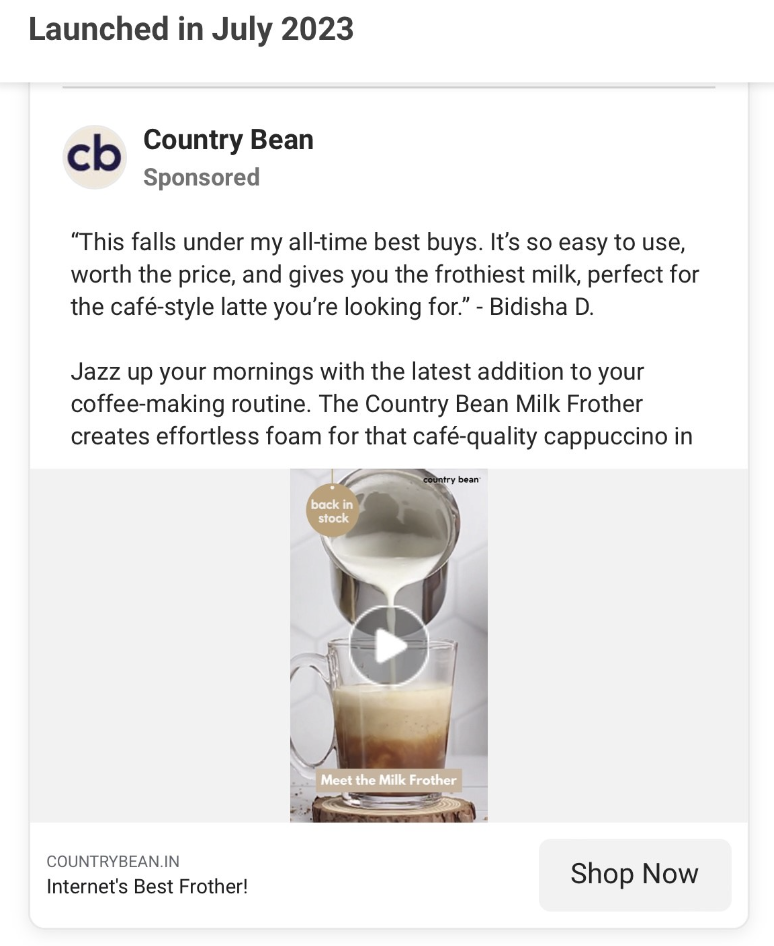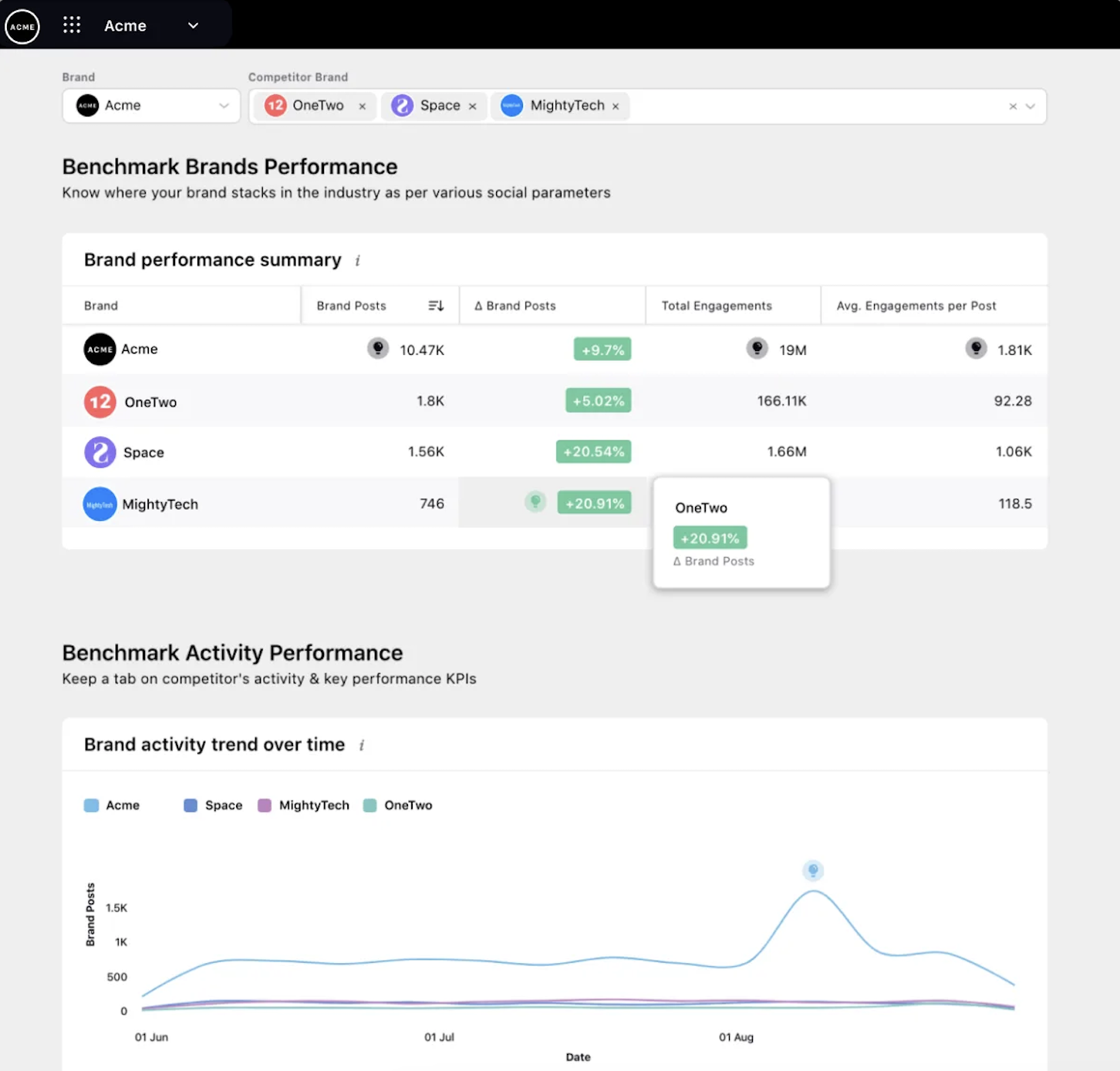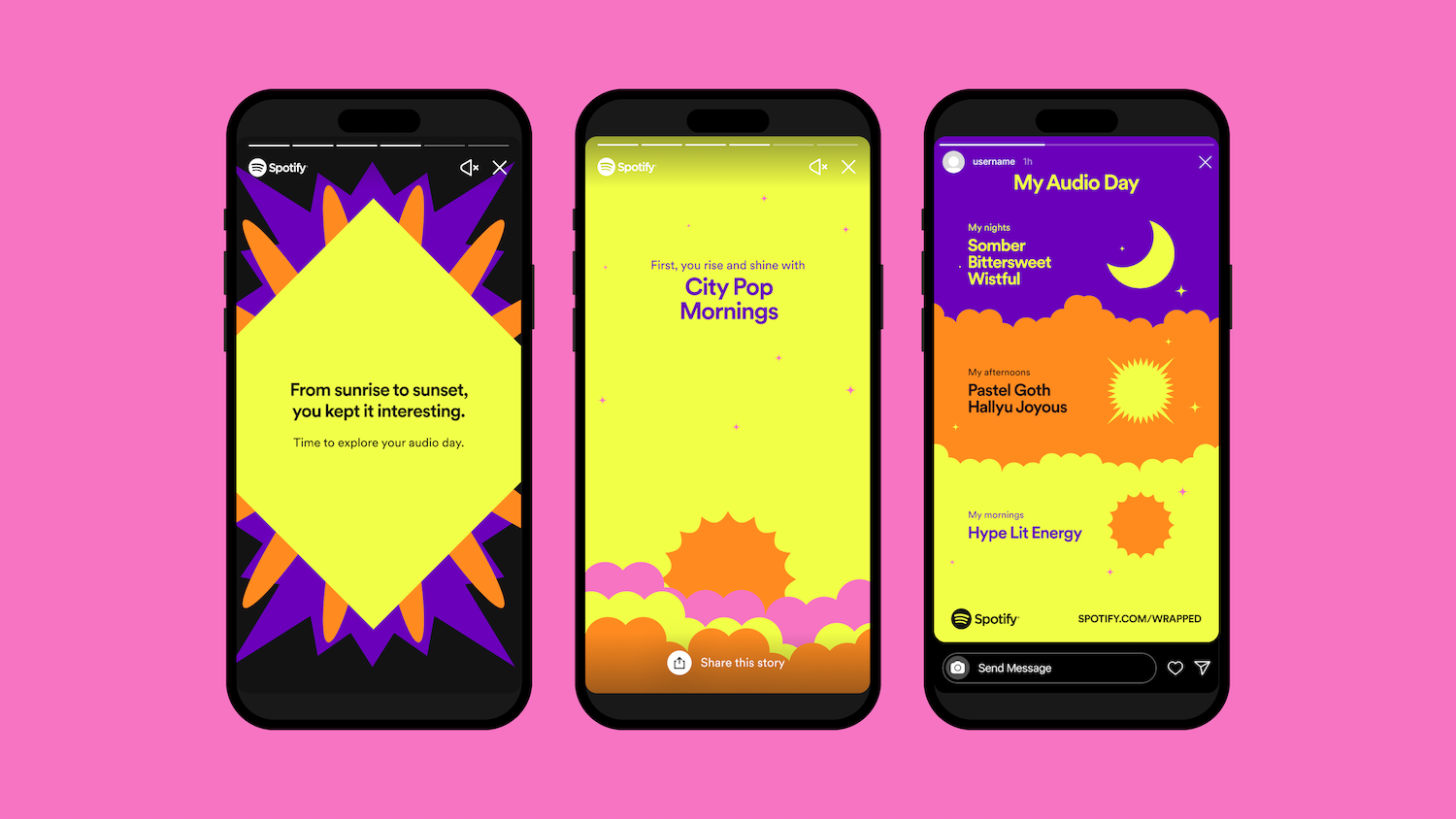Navigating the dynamic world of social media for business can appear daunting, as it continually evolves with its conversations, trends, and algorithms. Yet, in today's era, not leveraging this potent tool is not a viable choice. It undeniably plays a vital role in your business's growth strategy.
It comes as no surprise then that over 92% of U.S. marketers incorporate social media into their marketing strategies.
Yet merely setting up an Instagram account and posting intermittently won't suffice.
To stand out amidst the overwhelming digital clutter, you must understand how to use social media effectively.
A successful social media strategy extends beyond shares, tweets and likes. It revolves around narrating your brand's story and cultivating a community around your products or services. In this guide on social media for business, we'll acquaint you with essential tools, benefits, strategies and insights to enhance your business's online presence and transform your approach to social media.
Benefits of social media for business
Social media can be a powerful force in propelling your business forward. Let's explore some of its primary advantages, each supported by compelling statistics and real-world illustrations.
Brand awareness and reach
Social media platforms provide businesses with the opportunity to reach out to a wider and more diverse audience. In fact, statistics from Meta show that 83% of shoppers use Instagram to discover new products or services. Businesses can leverage this visibility to create engaging content to reach and attract a wider audience.Improve customer engagement and service
These platforms offer a unique, direct line of communication with customers. This access facilitates real-time engagement, fosters stronger relationships, and allows businesses to address customer queries, concerns and feedback promptly.Drive conversions and sales
Social media platforms, such as Instagram, exert a substantial influence on consumer purchasing choices. The success story of Country Bean, an Indian coffee brand, is a testament to this. Its Instagram ad-focused approach resulted in a remarkable 16% boost in sales for the brand.
Insights and analytics
Social media platforms offer integrated tools that furnish essential data on your audience's demographics, preferences and behaviors. Leveraging these social media insights can guide your business decisions, enabling the implementation of more precise and efficient marketing strategies.Cost-effective marketing
Compared to traditional advertising, social media marketing is much more cost-effective. Whether through organic posts or sponsored ads, impactful campaigns can be crafted across a range of budgets.
Ready to embark on your social media brand-building journey? However, before you get started, there's one essential question you should ponder: Which social media platforms are the best fit for your business?
6 Tips for choosing the social media platforms for your business
Understand your target audience
Each social media platform tends to draw different demographics. Research where your target audience spends their online time. For instance,If you're targeting younger users, platforms like Instagram, Snapchat or TikTok might be your best bet.
If you're aiming for a more professional audience, consider LinkedIn.
Define your goals
Different platforms lend themselves to different social media goals.If you aim to establish thought leadership in your industry, LinkedIn or Medium might be the right choice.
If you're aiming to promote physical products, Instagram or Pinterest, with their visual focus, could be effective.
Consider your content type
The type of content you intend to produce is a key consideration.If it's primarily video, consider YouTube or TikTok.
If it's short, engaging posts, Twitter or Facebook might be suitable.
Instagram or Pinterest works well for image-heavy or visual content.
Assess resources and commitment
Each platform requires a different level of commitment and resources.Daily posts and engagement might work on Twitter and Instagram, but the same might not be necessary or effective on LinkedIn. Evaluate your available resources and decide on the platform that best suits your business.
Examine industry presence
Examine where businesses similar to yours or competitors in your industry are most active and achieving results. This can provide valuable insights into where your target audience may be engaging with related content. Learn about competitive benchmarking and how to get it right.Test and analyze
Don't be afraid to test different platforms to see what works best. Utilize each platform's analytics tools to understand which ones can deliver the best results for your business.
Focus on establishing a robust and effective presence on a select few social platforms that match your business objectives and target audience. This approach is more advantageous than having dormant profiles on too many platforms. If you find it challenging to maintain active profiles on multiple platforms, consider using a social media management tool.
How to leverage social media management tools for your business
Here's how social media management tools can help bolster your business.
Scheduling and publishing
Schedule posts in advance, ensuring consistent content delivery at times when your audience is most active. Additionally, these tools allow the management of multiple social accounts from one dashboard, resulting in a more efficient workflow.
Pro Tip: Get free trial access to Sprinklr's Publishing and Engagement Tool, where all social media activities can be managed from one dashboard, across the globe.
Content creation at scale
Get access to customizable templates for creating eye-catching visual content. Consistency and quality in your content can increase engagement and reinforce your brand identity across various platforms.
Get Organized: How to create a social media content calendar
Listening and engagement
Social listening helps you track what's being said about your brand across different platforms. With integrated social listening, these tools can help manage your online reputation, gauge audience sentiment and identify opportunities for interaction.
Free Download: Publish, Engage, Unify: 18 Ways to Fuel Your Social Media Strategy
Analytics and reporting
Make use of the built-in social media analytics capabilities to track the performance of your social media campaigns. These insights can help refine your strategy, identify what resonates with your audience and measure your social media return on investment (ROI).
Influencer outreach
Tools that facilitate finding and connecting with relevant influencers can be powerful in extending your reach and boosting brand authenticity.
Customer service integration
Platforms that integrate social media with customer service can streamline interactions, ensuring quick responses and efficient problem-solving.
Read More: Social media customer service: How to do it right
Competitor analysis
Tools that analyze competitors' social media strategies can help you understand their approach, giving you a competitive edge. Check out Sprinklr's Competitive Insights & Benchmarking tool.

A unified social media management platform like Sprinklr Social, for instance, offers multiple functionalities, including content management, social listening, analytics and more, that can help businesses to better manage and scale. It's an all-in-one solution that can simplify your social media marketing efforts.
Best practices for using social media for your business
Mastering social media requires more than just a strong online presence. It requires strategic planning, regular engagement and performance analysis of your campaigns.
Here are a few best practices to help guide your approach.
Establish well-defined business goals: Before diving in, articulate your intentions for your social media presence. Whether your aims are centered around enhancing brand awareness, boosting sales, fostering customer engagement, or generating leads, having clear social media goals can serve as a compass for your strategy.
Understand your target audience: Research your target demographic thoroughly. Knowing their preferences, habits and interests will help you create content that resonates with and engages them.
For instance, Spotify knows that its users love personalized experiences. So, it creates annual "Wrapped" campaigns sharing each user's unique listening habits. Users, in turn, share their personalized insights on social media platforms, driving organic traffic to the streaming app.
Consistent branding: Ensure your brand's voice, imagery and messaging are consistent across all platforms. This consistency reinforces brand recognition and trust.
Create quality content: Prioritize quality over quantity. Craft engaging, valuable and shareable content that provides value to your audience. Here is a quick guide on Social Media Content Creation.
Interact with your audience: Initiate conversations rather than merely delivering messages. Wendy's, the fast-food chain known for its witty X (formerly Twitter) posts, often engages in playful banter with its followers, cultivating a strong online community.

Utilize visuals: Make your feed pop with captivating visuals. National Geographic's Instagram account uses breathtaking images to draw users in, driving significant engagement.
Monitor and adapt: Use social media metrics to measure your success and gain insights into what works and what doesn't. Be ready to adapt your strategy based on these insights.
Conclusion
In the modern business landscape, social media has evolved into an indispensable tool that facilitates direct connections between businesses and their audiences. To unlock its full potential, you need to comprehend your audience, establish clear objectives and produce compelling content.
Nevertheless, implementing a successful social media strategy demands time, dedication and the use of appropriate tools. This is where a comprehensive platform like Sprinklr can be a game-changer. With a comprehensive social media management solution such as Sprinklr Social, you can streamline your social media marketing efforts with ease.
Contact us today to take your social media game to the next level.
Frequently Asked Questions
There is no single posting schedule that works for all brands. The correct frequency depends on factors such as your industry and audience size. It's essential to maintain a balance — you want to stay visible and relevant without overwhelming your followers with too much content.







